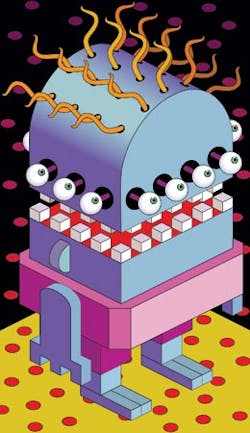That prescription is particularly wise if out-of-calibration equipment causes production instability. “Companies are always trying to make [machines and instruments] more accurate and reliable,” Westbrock observes. “But end-users can save time—and money—if they find the optimum time between calibrations.”Some instrument vendors offer 10-year stability guarantees, meaning “no calibration within that first 10 years [of service],” Westbrock explains. He notes, though, that nothing is in-built to trigger the end-of-first-decade calibration. “It’s something you would just factor into your schedule.” But he suspects that “a lot of end-users do the tests for a while to test that devices don’t drift and go out-of- spec.”However, some end-users or resellers jump the proverbial gun and perform out-of-the-box calibrations on factory-fresh instruments. “They would’ve been better off to have left the new instruments alone,” Westbrock opines. “A device may be more poorly calibrated when they install it than when it left the factory.”To allow initial device calibrations and then have reliable testing programs so that instruments stay within specification, overall calibration/test-program software is finding more use. That allows end-users to ensure properly performed and documented automation sequences, comments John Yingst, product manager with automation vendor Honeywell Process Solutions (hpsweb.honeywell.com), Phoenix. This functionality, along with automated digital features of smart devices, makes the overall calibration process faster and more accurate, he states.Calibration support will also extend to more protocols, Westbrock forecasts. “When you do calibrations, oftentimes handheld calibrators are taken in the field. Lots of those are focused on Hart [Communication Protocol-enabled] instruments. But we’ll see more calibration support, in asset-management systems, as well as the handhelds, for the Fieldbus Foundation and Profibus PA protocols.” When? “I don’t think we’re going to see it in the next six months, but in the next couple of years, we will.”What will that mean to end-users, especially users of Hart-enabled devices? They may wonder if the same ability exists with those other protocols as with Hart, Westbrock suggests. But with the upcoming expanded support, those end-users will be able to “to choose the [communications] protocol that makes the most sense to them.”Embedded intelligenceEnd-users can also continue to use intelligent digital technologies in instrument calibration. Using the embedded features of Electronic Device Description Language (EDDL) and Field-device Tool (FDT)/Device Type Manager (DTM) allows end-users to provide consistent calibration, Yingst asserts. And while EDDL and FDT both enable physical calibration of devices, “what neither does by itself is to put into place the calibration management software,” Westbrock notes.Worth remembering is that just because EDDL and FDT/DTM technologies are digital, they’re not flawless, Yingst remarks. “As engineers, we never really trust anything, so having this ability to perform calibration checks is crucial to mitigating risk.” He believes the general consensus is that “end-users really aren’t using” the technologies for instrument calibration. So if a transmitter is installed and fails calibration checks, most users will pull it, replace it with a spare and return it to the factory where it can be properly and more accurately calibrated, he observes. “No one wants to waste time trying to fix it.”Wasting time and money represent end-users’ biggest calibration problems, Westbrock thinks. That’s because the users “haven’t figured out the boundaries of how long the instruments can go between calibrations.” But, he cautions, avoid just calibrating devices “to say you’ve saved money, when you’ve [actually] just maintained things. The more often you calibrate a device, the more likely you are to poorly calibrate it in at least one of those tests.” Translation: Stop tinkering —and bank money.C. Kenna Amos, [email protected], is an Automation World Contributing Editor.Emerson Process Managementwww.emersonprocess.comHoneywell Process Solutionshpsweb.honeywell.com
Subscribe to Automation World's RSS Feeds for Columns & Departments
About the Author
C. Kenna Amos
Contributing Editor
Sign up for our eNewsletters
Get the latest news and updates

Leaders relevant to this article:
